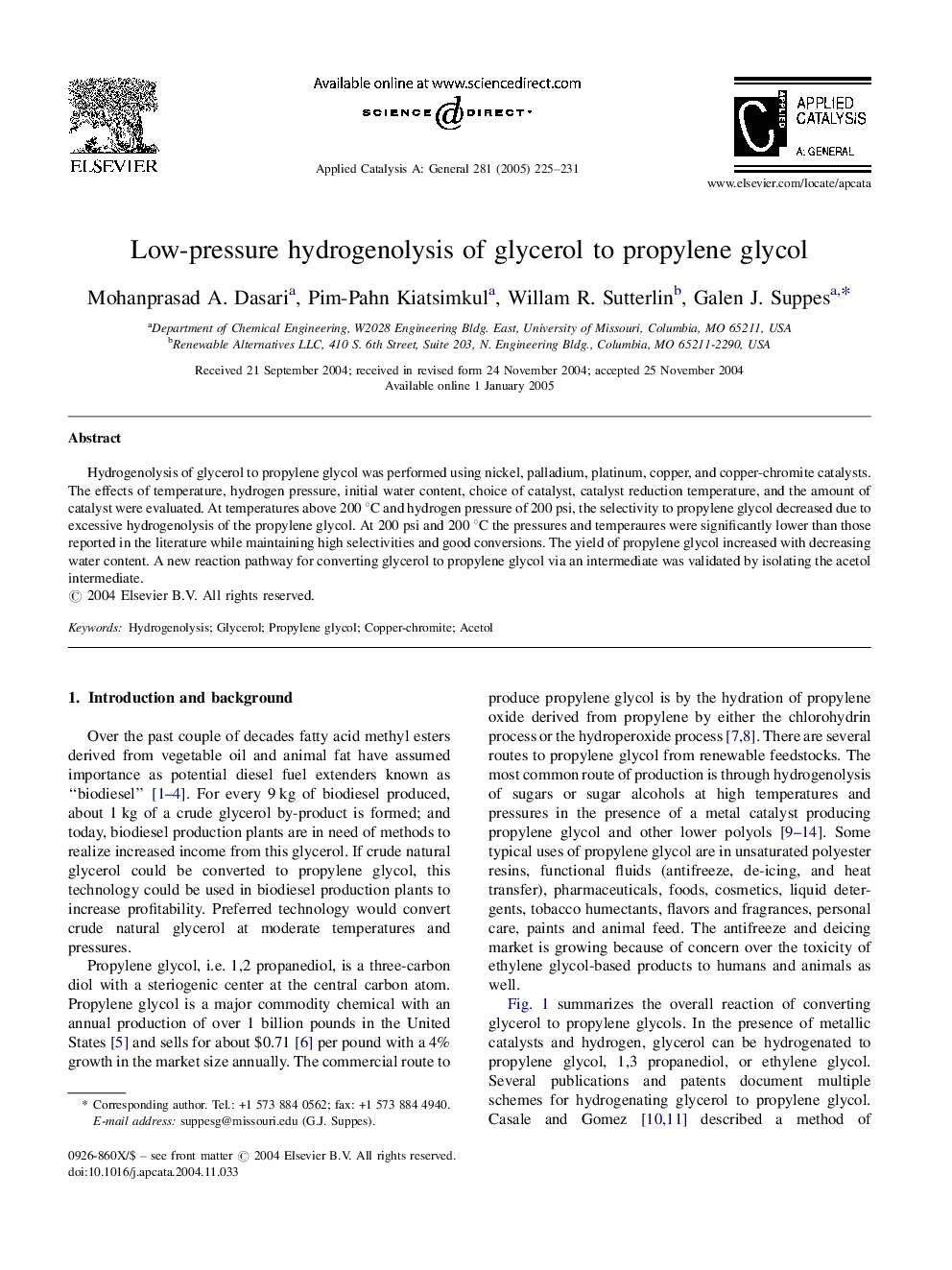| Article ID | Journal | Published Year | Pages | File Type |
|---|---|---|---|---|
| 9608100 | Applied Catalysis A: General | 2005 | 7 Pages |
Abstract
Hydrogenolysis of glycerol to propylene glycol was performed using nickel, palladium, platinum, copper, and copper-chromite catalysts. The effects of temperature, hydrogen pressure, initial water content, choice of catalyst, catalyst reduction temperature, and the amount of catalyst were evaluated. At temperatures above 200 °C and hydrogen pressure of 200 psi, the selectivity to propylene glycol decreased due to excessive hydrogenolysis of the propylene glycol. At 200 psi and 200 °C the pressures and temperaures were significantly lower than those reported in the literature while maintaining high selectivities and good conversions. The yield of propylene glycol increased with decreasing water content. A new reaction pathway for converting glycerol to propylene glycol via an intermediate was validated by isolating the acetol intermediate.
Related Topics
Physical Sciences and Engineering
Chemical Engineering
Catalysis
Authors
Mohanprasad A. Dasari, Pim-Pahn Kiatsimkul, Willam R. Sutterlin, Galen J. Suppes,
